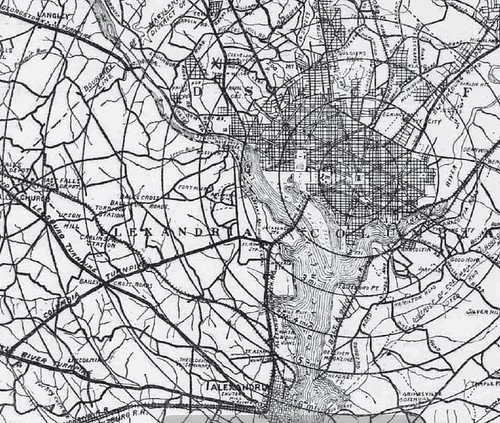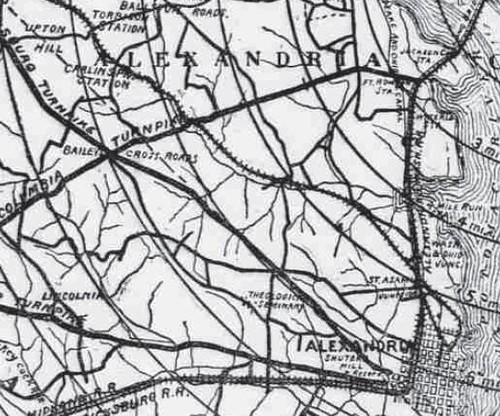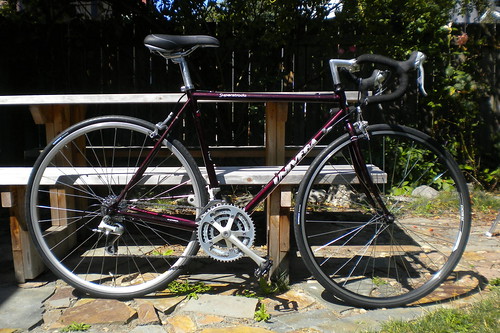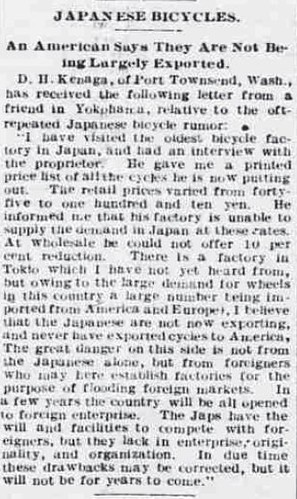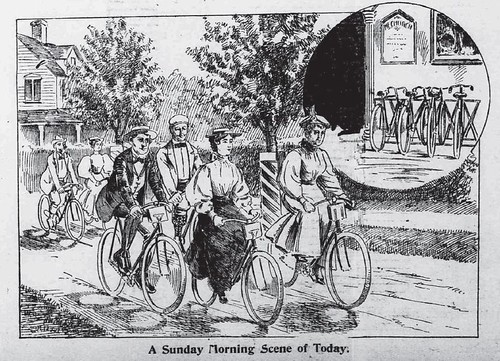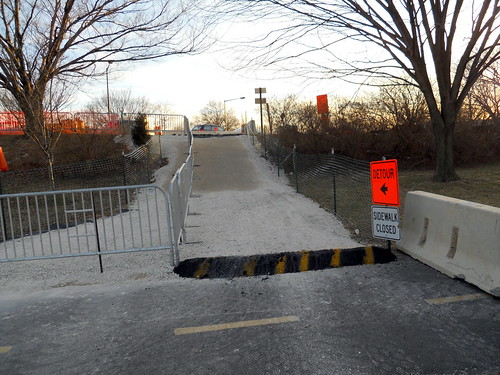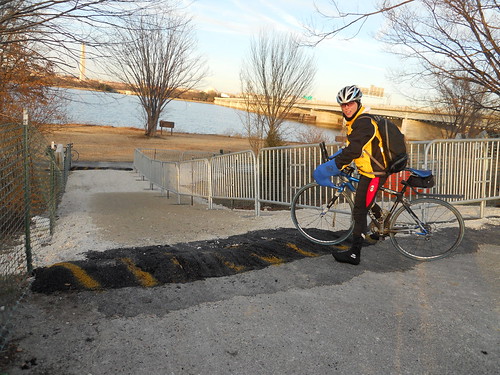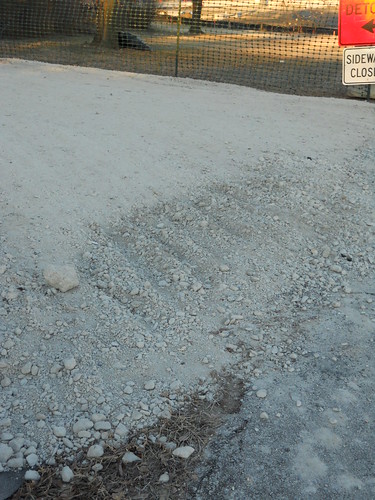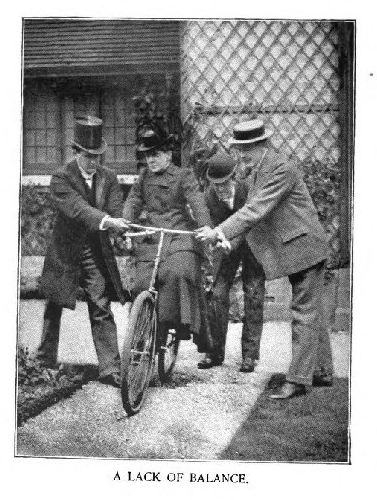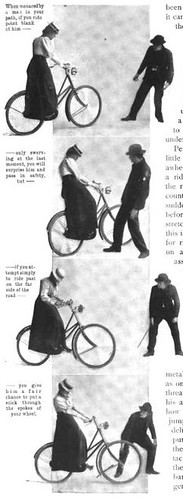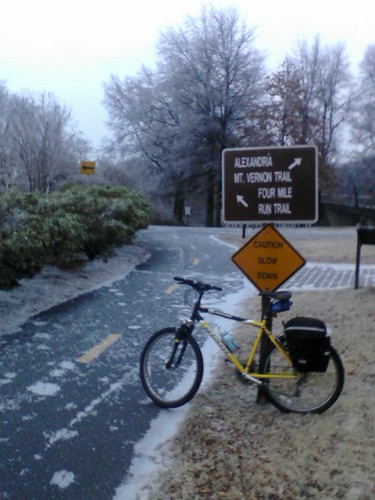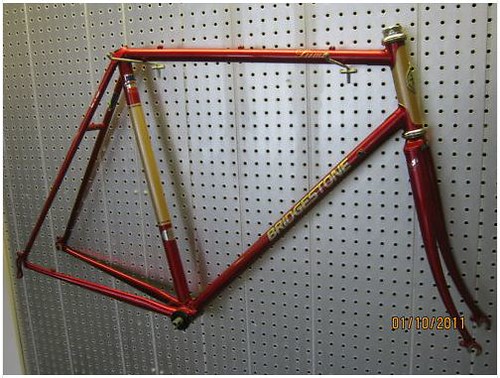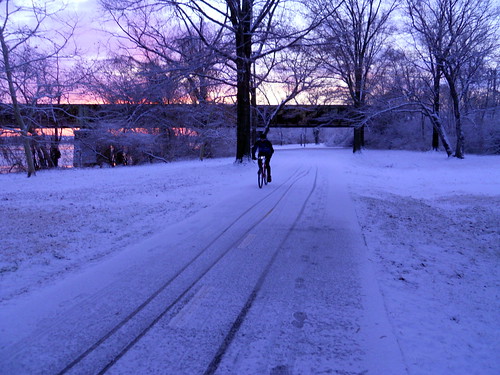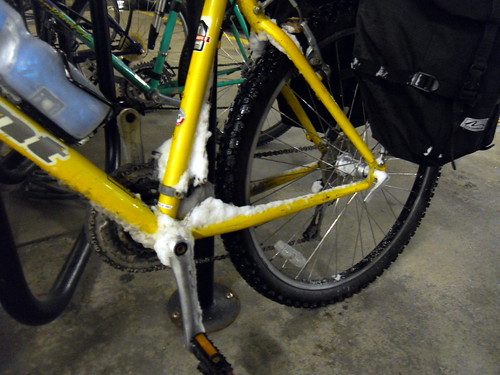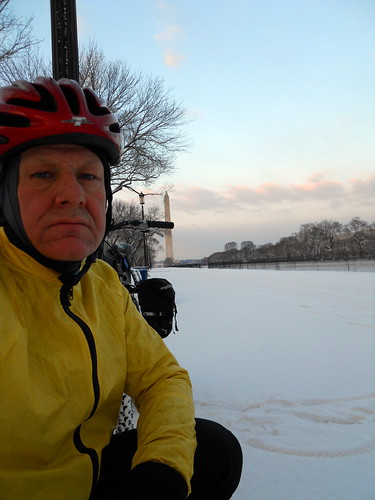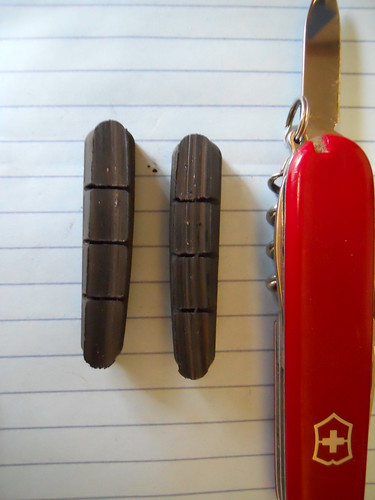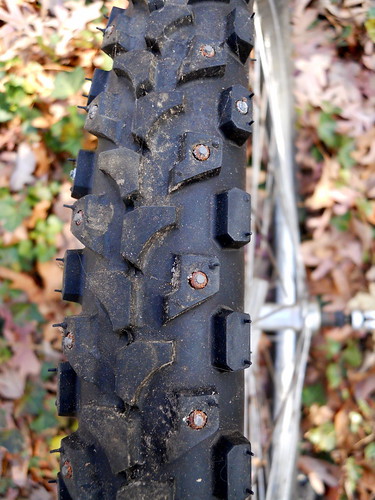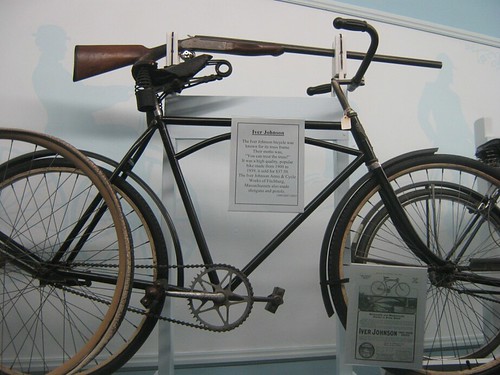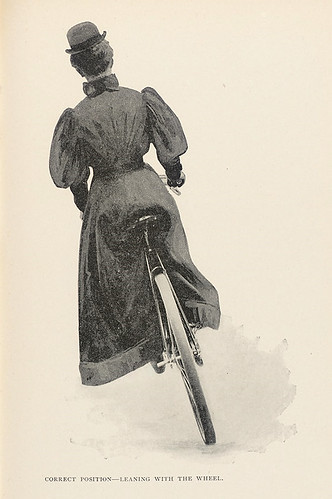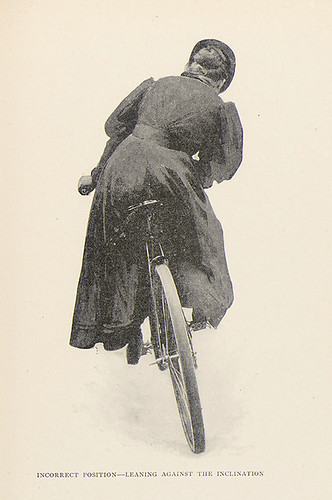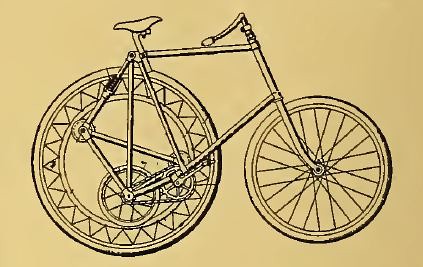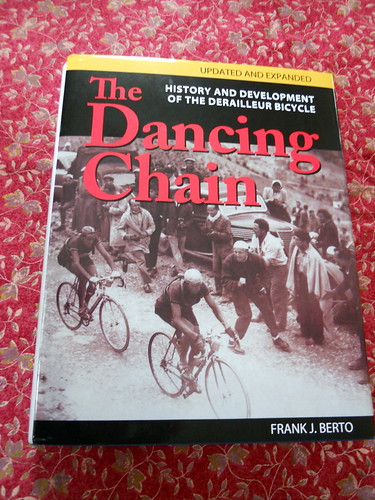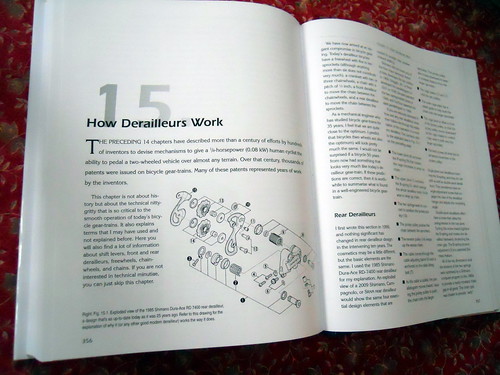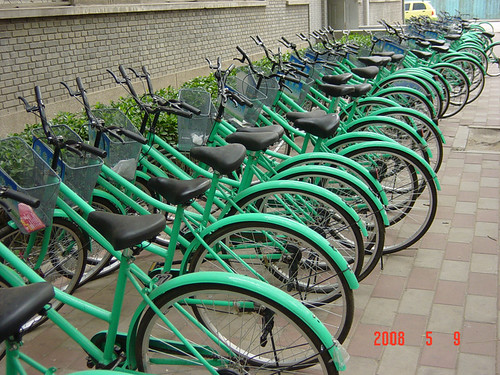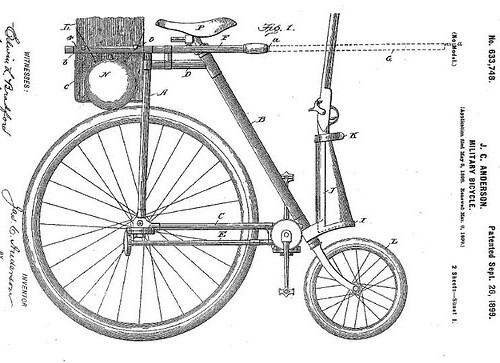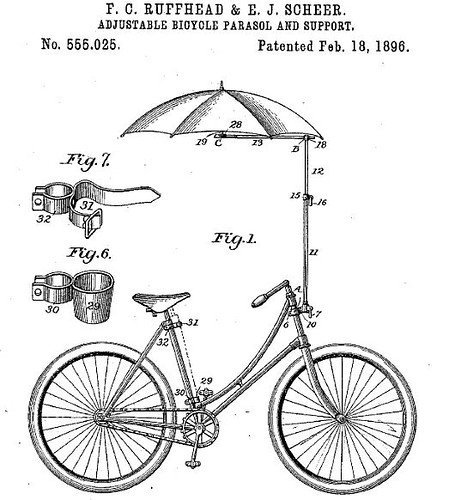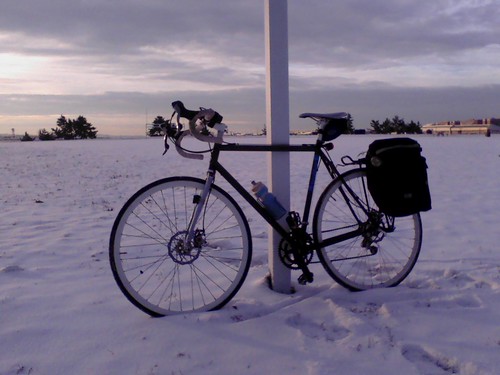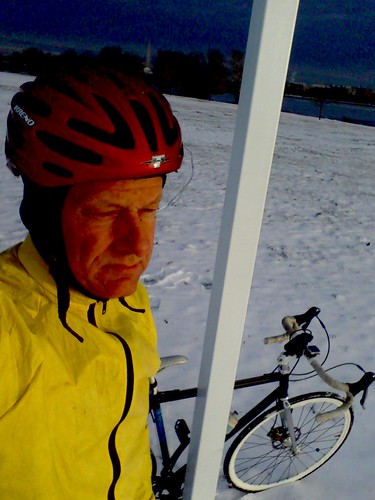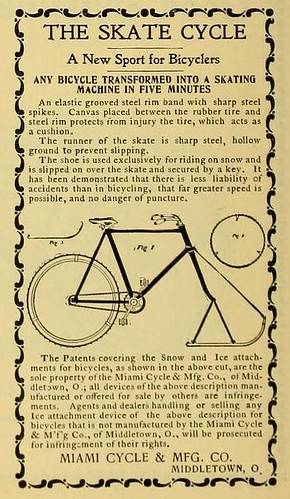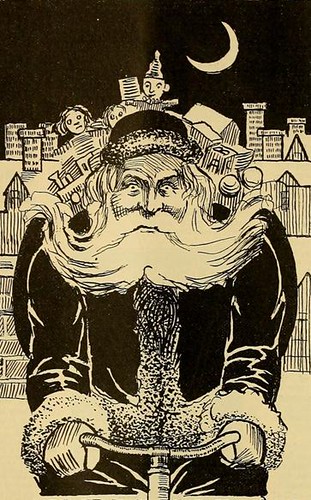As I mentioned in my
preceding post I have bought a frame (+ headset + fork + bottom bracket) on Ebay.
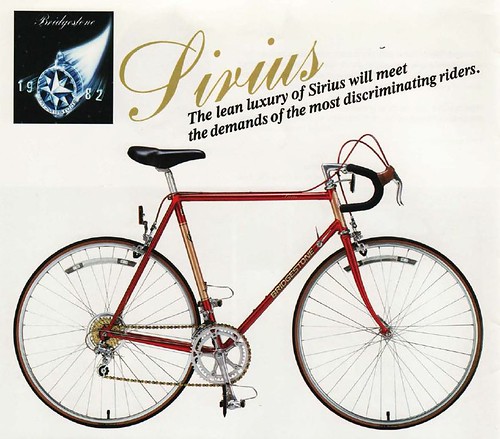 The 1982 Bridgestone Sirius as shown in the 1982 Bridgestone bicycle catalog
The 1982 Bridgestone Sirius as shown in the 1982 Bridgestone bicycle catalogI am apparently a
terrible librarian - I should have done various research before I bought the thing, but instead am doing most of it after. So far, no particularly surprising (unpleasant or otherwise) discoveries.
The bike is double-butted 4130 Chromoly (CrMo) with Tange lugs and Tange headset. The 23 inch (or 56 cm using today's usual metric) size was listed at 23 pounds, which is fairly good. Made in Japan. . . it is the same "Bridgestone" that makes tires for Toyota etc. It was the top of the line for Bridgestone at that time, but that doesn't really mean too much - they were not yet a very serious builder.
Apparently some time not long
after Bridgestone made the Sirius (and other spacey-named bike models) a fellow named Grant Petersen started running the Bridgestone bike division and the Bridgestone road bikes produced under his leadership are considered rather special - "Bridgestone bicycles are something of a cult item now" per
Sheldon Brown. However he means ones made
after the one I just bought. Still, this is a classic Japanese-built steel road frame and should be very nice to ride.
Research on such things is interesting. Sheldon Brown has an
entire separate page on the subject of Bridgestone bikes (again, focusing on 1985 forward) as well as digitized Bridgestone bicycle catalogs from 1985 through the 1990s. These digitized catalogs are quite interesting (well, it depends on what turns you on) to look at, but of course the selection generally via the Internet is completely random depending on someone having them and then decided to digitize them. (Many such catalogs, particularly from 1989 on, are in violation of copyright, but one can assume the relevant company wouldn't care, up to a point. The catalogs before 1989 for the US market that aren't marked with (c) or the word "copyright" with a date are probably in the public domain. Maybe.)
At any rate, a simple Google search on "1982 Bridgestone bicycle catalog" brought up a site where someone has the full 1982 catalog in PDF - I'm not going to link to it since it is slow to load; it is over three megs. Very nice to have that, if only to confirm that what I bought in fact
is an '82. There is another
article about Bridgestone bikes that gives some further background.
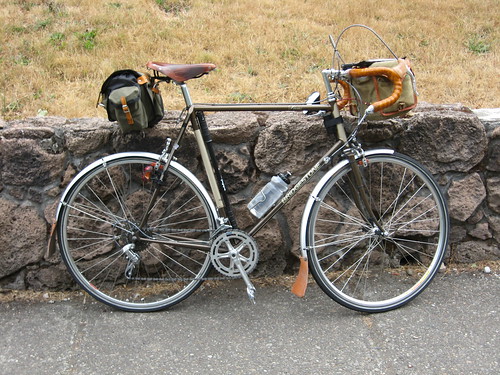
The above beautiful randonneering bike was built up on the same frame I purchased (which is available in two color schemes - this is the less gaudy one). It is from a Flickr group devoted to
Bridgestone bikes. The randonneering approach with fenders and so on is not the direction I am planning to go in but it is nice to see someone investing that kind of money into this frame.

